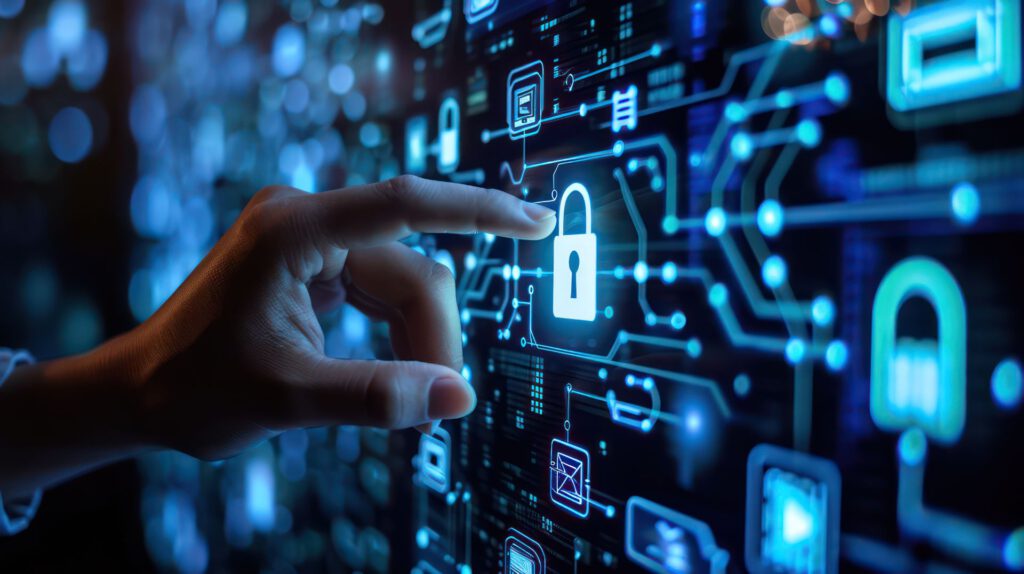Navigating the New CMMC 2.0: What Businesses Need to Know for Compliance
Introduction
With the recent release of the updated CMMC 2.0, defense contractors face updated cybersecurity requirements aimed at strengthening the protection of Controlled Unclassified Information (CUI) across the defense supply chain. This article provides an overview of the revised framework and key steps to achieve compliance, helping businesses maintain eligibility for DoD contracts and enhance their cybersecurity posture.
Understanding CMMC 2.0
The CMMC 2.0 framework streamlines the original model to three levels, reducing complexity while aligning closely with NIST SP 800-171. This approach supports contractors in meeting cybersecurity standards with greater ease and flexibility:
- Level 1 (Foundational): Basic cybersecurity hygiene for contractors handling FCI, requiring annual self-assessments.
- Level 2 (Advanced): For contractors handling CUI, incorporating the NIST SP 800-171 controls with third-party assessments for certain contractors.
- Level 3 (Expert): Advanced security measures focused on protecting high-priority CUI, with government-led assessments and NIST SP 800-172 requirements.
Key Changes in CMMC 2.0
- Simplified Compliance Levels: The model is now structured around three levels, down from five, significantly reducing the burden on contractors.
- Elimination of Unique Practices: The updated framework focuses solely on existing cybersecurity standards like NIST SP 800-171, removing additional requirements that complicated compliance.
- Increased Flexibility with Self-Assessments: Level 1 and certain Level 2 contractors can perform annual self-assessments, reducing administrative costs while maintaining robust standards.
- Streamlined Integration with NIST SP 800-171: By aligning with existing NIST guidelines, CMMC 2.0 simplifies the process, making it easier for businesses already familiar with these standards to comply.
- Enhanced Focus on Cybersecurity Culture: Organizations are encouraged to foster a security-conscious culture, promoting ongoing training and awareness to adapt to evolving threats.
Steps to Achieve CMMC 2.0 Compliance
- Understand the Requirements: Familiarize yourself with the specific requirements of the applicable CMMC level and review NIST SP 800-171.
- Conduct a Gap Analysis: Identify areas where current practices fall short, helping to prioritize necessary changes.
- Develop a Remediation Plan: Address gaps with a structured plan, focusing on critical areas first.
- Implement Required Controls: Deploy security controls such as access management, incident response, and continuous monitoring.
- Document Compliance Efforts: Maintain detailed records to demonstrate compliance during assessments.
- Conduct Self-Assessments: For Level 1 and parts of Level 2, use the DoD’s tools to evaluate and maintain cybersecurity posture.
- Prepare for External Assessments: For applicable Level 2 and all Level 3 contractors, ensure readiness for third-party or government assessments.
Leveraging Managed Services for CMMC Compliance
Managed service providers (MSPs) specializing in CMMC compliance can simplify the process by offering:
- Expertise and Experience: MSPs stay current with regulatory changes and help businesses meet standards.
- Comprehensive Assessment and Implementation: MSPs conduct gap analyses and assist with remediation and security control implementation.
- Continuous Monitoring and Threat Detection: Advanced threat detection tools ensure ongoing compliance and security.
- Documentation and Reporting: MSPs maintain thorough records, supporting audit readiness and compliance.
- Cost-Effective Solutions: MSPs provide cost savings, particularly beneficial for SMBs looking to access high-quality security services without significant investment.
Best Practices for Navigating CMMC 2.0
- Stay Informed: Keep up with CMMC and related updates from the DoD.
- Engage Stakeholders: Involve key stakeholders across the organization in compliance efforts.
- Foster a Security-Conscious Culture: Regular training promotes awareness of cybersecurity’s importance.
- Leverage Automation: Use automated tools for monitoring, threat detection, and incident response.
- Regularly Review and Update Security Policies: Continuously adapt to emerging threats to ensure compliance.
Conclusion
CMMC 2.0 compliance is essential for defense contractors to protect CUI and secure and/or maintain DoD contracts. Leveraging MSPs can provide the expertise, technology, and cost-effectiveness needed to navigate compliance efficiently, helping businesses contribute to a resilient and secure national defense infrastructure.
